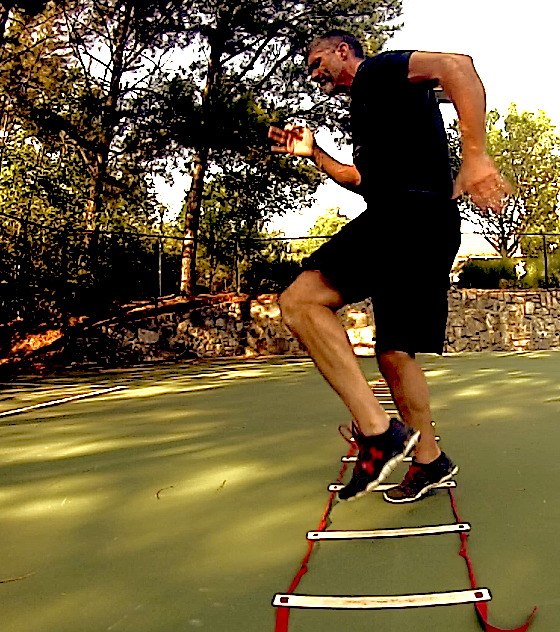
An Intro To Indian Club Training
Guest Post By: Don Giafardino
Indian club training is one of the oldest forms of exercise. Ancient warriors used clubs in battle and then discovered that by practicing swinging the club it made them stronger and faster.
Fast forward to the late 1800’s/early 1900’s when almost every gymnasium had an array of different weight clubs made from wood for students to use in training. Sometime later, in the 1940’s they fell out of sight, most likely in favor of barbells and dumbbells.
Enter the world of today where ‘functional fitness’ is all the rage. Fitness styles that emulate more of how we lift, carry, and move throughout our day. Fitness that is focused on lifelong performance rather than just a desire to move a heavy weight, or for the sole purpose of hypertrophy. This is where club training comes back in and it is suitable to both the barbell athlete and the functional fitness student.
A Solid Background
The clubs themselves have evolved incredibly over the centuries. One can only imagine that the first club was nothing more than a tree branch. As time passed the wooden clubs became beautiful works of art.
As with all things time has altered their design. Modern clubs are now made from either wood, or metal with the latter usually being the heavier designs although there are some very heavy wooden clubs.
The most modern and adaptive clubs are the Adex Clubs which are adjustable. The differences in the materials can almost always indicate a different style in which the clubs are used.
An almost kata style of flowing exercises is synonymous with the wooden clubs, whereas the metal clubs are predominantly used for performing heavy single exercises for a rep/set scheme much like weight training.
Both types of clubs offer a unique strength building property that isn’t limited to a linear path. In other words, they build strength in three planes – front to back, side to side, and up and down.
The benefit of a full 360 degrees of motion is a traction effect that decompresses the joints due to years of weight training and calisthenics. Physical therapists use clubs to restore patient range of motion especially in the shoulder area. World renowned powerlifter Louie Simmons rehabbed his injured shoulder with the use of clubs and went on to set more records afterwards.
This article will focus on the metal clubs and the heavier style of club training. As a rule of thumb most fit men can begin to train using a 15 pound club where fit women should begin with a 10 pound club.
After a short time, the athlete will discover that a 25 pound club isn’t a joke. In spite of the seemingly light weight a 25 pound club is a serious training tool that should require a proper progression.
Utilizing clubs in any athlete’s training program is a huge plus for increased performance. All of the exercises work the smaller stabilizer muscles along with agonist/antagonists increasing their strength and stability. Even upper body club work translates into the core and hip girdle, thighs, calves, and small muscles of the feet.
An athlete should add club training to their program by beginning with the basics. The two handed front swing and the side swing are primary moves that are at the foundation of other club exercises.
The Front Swing
The Side Swing
These movements are great for the core and hip stabilizers. From here you can progress further into cleans from the front and side position.
Once these are learned by the trainee then that individual can transition into more challenging movements which will increase that athlete’s resistance to injuries.
More strength will come as the reps and weight of the club increases. It isn’t uncommon for club training athletes to knock out a thousand reps in a single workout using a 25 pound club.
Club training will build strength, power, endurance, burn fat, and condition an athlete in a hurry. Increasing shoulder girdle mobility means an increase in Olympic lifts, better bench presses, and greater ROM for tight and sore shoulders.
Practicing two handed heavy cleans with the club teaches fast hips for weight lifters to get under the bar quicker. The use of both hands for any movement builds bilateral coordination along with developing more efficient nerve pathways to increase athleticism. Club training is a guaranteed way to bring the trainee closer to achieving his goals faster.
The Club Clean Demo
Keeping It Safe
As with all forms of exercise there are some safety precautions that a trainer or trainee must observe. The first being to keep the shoulders packed. That means to press the shoulder blades down toward your butt.
Do not let the shoulder rise up toward the ears. The second is to hold the chest up high and proud – no slouching. Next, make sure your head is tall and stationary.
Halos, or circling a club around the cranium will be involved in more than one move. With this the club moves around the head, not the head ducking out of the way of the club – unless it’s a mistake, or a slip then by all means get out of the way!
Another one is to keep the spine long. Don’t round your lower back, or pull it into a ‘sway back’ position. Your spine is designed to distribute weight and movement due to its “S” shape so make sure to keep it tall. Lastly, keep a slight bend in the knees to absorb any additional load that is translated through the spine.
As an athlete becomes more proficient in his, or her club training the natural desire to do more challenging exercises should be welcomed. The benchmark for any club trainer is performing an inside mill or just plain mill. The mill is the clubwork equivalent to the bench press. Check it out here.
Learn More
This article contains some links to see a couple of exercises on YouTube. Many instructional videos are available online. Search under the words clubbell, Indian Clubs, maces, and of course Adex Clubs.
Many instructors offer some video tutelage and they include John Belkewitch, Chip Conrad, Shane Heins, Rik Brown, Scott Shetler, and The Stillness Gym. Dr Ed Thomas is one of the leading authorities on Indian Clubs exercises which are the foundation for heavier club moves.
Give the clubs a try, whether it’s for building power, rehabilitating an injury, or as a main source of exercise. It is a complete training method with loads of benefits.
About The Author
Don Giafardino is a long time fitness enthusiast who developed the Adex Adjustable Exercise Club to treat his injured shoulder. Years of heavy weight training left Don living with chronic shoulder pain rendering him unable to perform a simple push up.
Don searched for an alternative way to exercise and came across club training. He began by using a loadable dumbbell with 2.5lbs on one side to experiment with the club movements and noticed quick relief.
Don was eager to heal his shoulder and looked into purchasing a real club to train with, but was disappointed at the cost thinking that he’d most likely outgrow the first club in a relatively short period of time.
His concern was observing the pattern of having to buy one club and then another and another… and then having to pay for the shipping on each new club that he would have to order.
Fortunately Don was able to tap into his gift of being inventive by nature, and also having the incredible luxury of a friend who owns a welding shop. Because of this Don set out to make his own club that was an adjustable design.
The first designs for his adjustable clubs were from Tee-ball baseball bats with a weight plate sandwiched inside them. Don continued to experiment and refine the design over time until he reached what is known today as the Adex Club.
The Adex Club is a solid steel club with six different weight settings that you can change quickly and safely by hand. It is basically a set of 6 clubs included into one 25lb. unit. The increments range from 3.5, 5, 10, 15, 20, & 25lbs. and the unit can be shipped at a flat rate insured for just $24.
To Learn More About Adex Clubs Click Here.
For Subscribe To Don’s YouTube Channel Here.
Related Articles:
Examining The Single Arm Kettlebell Swing
Examining The Kettlebell Clean
Training For Symmetry And Performance
How To Apply Minimalist Training For Maximal Results
Get Free Updates And Training Guides Here








